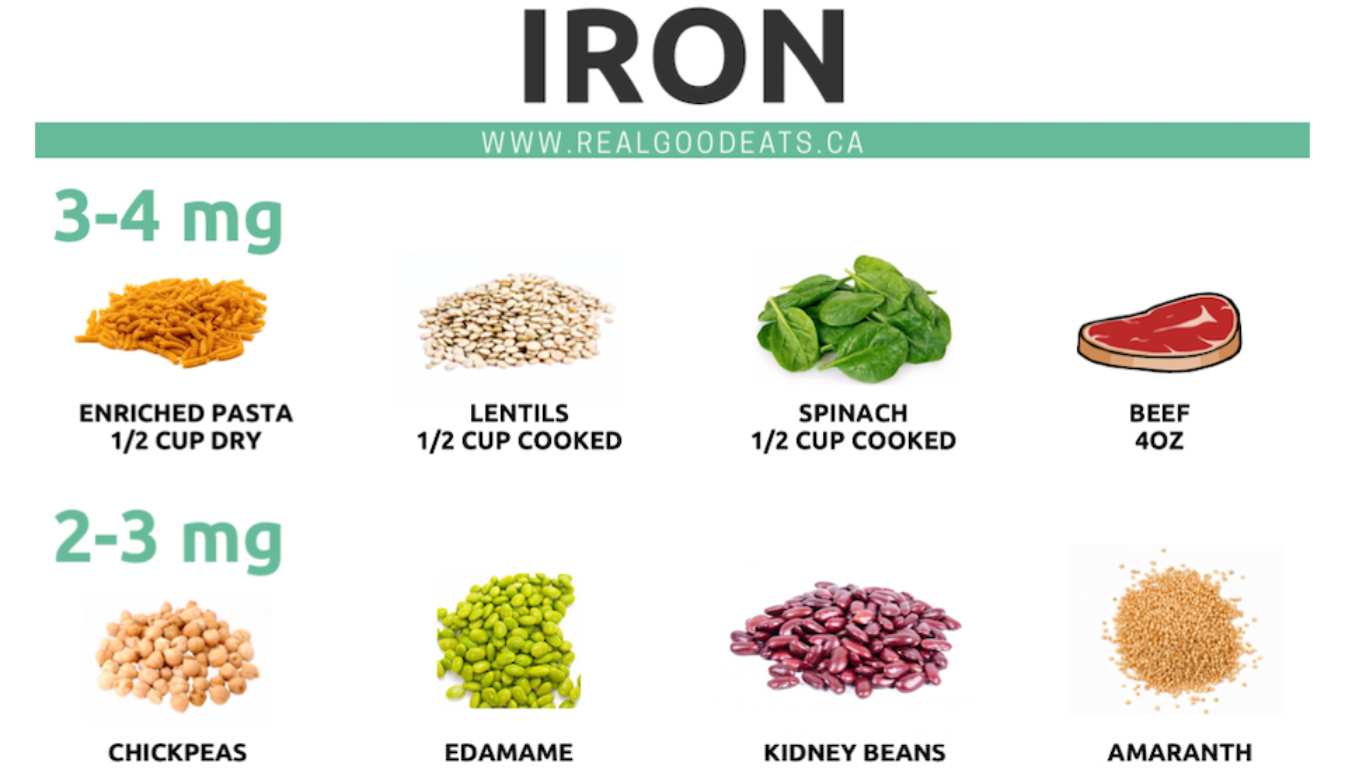Iron is an essential mineral found in many foods. It helps produce red blood cells and transport oxygen throughout our body. It is naturally present in animal and plant foods and fortified in some packaged foods, such as pasta and cereal. Continue reading for the 10 Best Food Sources of Iron to make sure you’re getting enough each day.
Heme Vs. Non-Heme Iron
There are two forms of iron – Heme iron and non-heme iron. Heme iron is found in animal sources, such as meat, and non-heme iron is found in plant sources, such as spinach. Heme iron has a higher bioavailability, meaning it is more readily absorbed by our bodies than non-heme iron. However, we can increase the rate at which our body absorbs non-heme iron by pairing it with a source of vitamin C.
What Does Iron Do?
Iron is involved in the production of red blood cells in our bodies which helps to transport oxygen to our cells. Iron also helps to support muscle metabolism and the development/maintenance of healthy connective tissue. Iron is responsible for growth and neurological development in children, and aiding in the synthesis of some of our hormones. Most iron is stored as hemoglobin in our red blood cells; however, it is also stored as ferritin in our liver, spleen, and bone marrow.
How Much Iron Do We Need?
The RDA for iron for adults is 18 mg/d for menstruating females and 8mg per day for men or non-menstruating females. RDA stands for the Recommended Daily Allowance, which defined as the average daily dietary intake level that is sufficient to meet the nutrient requirement of nearly all healthy individuals in a particular life-stage and gender group.
| Age/Gender | RDA (Recommended Daily Allowance) | UL (Upper Limit) |
|---|---|---|
| 0-6 months | *No RDA. AI = Adequate Intake | |
| 0.27 mg/day | 40 mg/day | |
| 7-12 months | 11 mg/day | 40 mg/day |
| Children 1-3y | 7 mg/day | 40 mg/day |
| Children 4-8y | 10 mg/day | 40 mg/day |
| Males 9-13y | 8 mg/day | 40 mg/day |
| Males 14-18y | 11 mg/day | 45 mg/day |
| Males 19y+ | 8 mg/day | 45 mg/day |
| Females 9-13y | 8 mg/day | 40 mg/day |
| Females 14-18y | 15 mg/day | 45 mg/day |
| Females 19-30y | 18 mg/day | 45 mg/day |
| Females 31-50 | 18 mg/day | 45 mg/day |
| Females 50y+ | 8 mg/day | 45 mg/day |
| Pregnancy <18 | 27 mg/day | 45 mg/day |
| Pregnancy 19y+ | 27 mg/day | 45 mg/day |
| Lactation <18y | 10 mg/day | 45 mg/day |
| Lactation 19y+ | 9 mg/day | 45 mg/day |
Iron Deficiency
Without enough iron in our diet, we can develop an iron deficiency. While anyone can become iron deficient, some populations are at a higher risk. These include pregnant women and women with heavy menstrual periods, young children and infants, female athletes and endurance athletes, and those with conditions that may impair iron absorption, such as celiac disease.
Iron Deficiency Anemia
There are different stages to iron deficiency, from mild iron deficiency (or low iron levels) to iron deficiency anemia. Fatigue is one of the most common symptoms of iron deficiency, as the amount of oxygen being transported to cells can decrease. Symptoms of iron deficiency can also include dizziness, difficulty concentrating, muscle weakness, pale skin, hair loss, brittle nails, impaired cognitive function, impaired immunity, and impaired ability to regulate body temperature. Iron deficiency is the most common form of anemia worldwide.
Can you get Too Much Iron?
The Upper Limit (UL) for iron intake is 45mg per day for adults. As intake increases above the UL, the potential risk of adverse effects increases. Iron supplements pose the most significant risk of excessive iron intake. For this reason, it is important not to take an iron supplement unless you have been recommended to do so by your physician.
10 Best Food Sources of Iron
1. Enriched Pasta
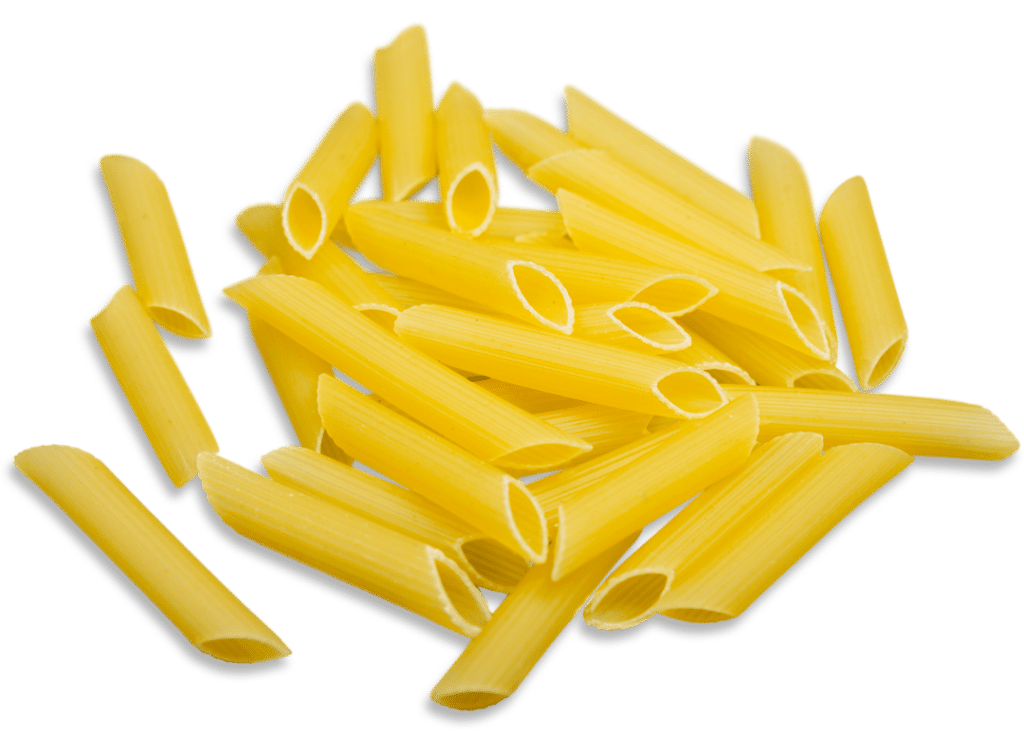
1/2 cup dry (or ~1 cup cooked) enriched pasta contains 3-4mg of iron. Not all pasta on the market has been fortified with additional iron. Be sure to select a brand that provides at least 15% DV of iron.
2. Lentils
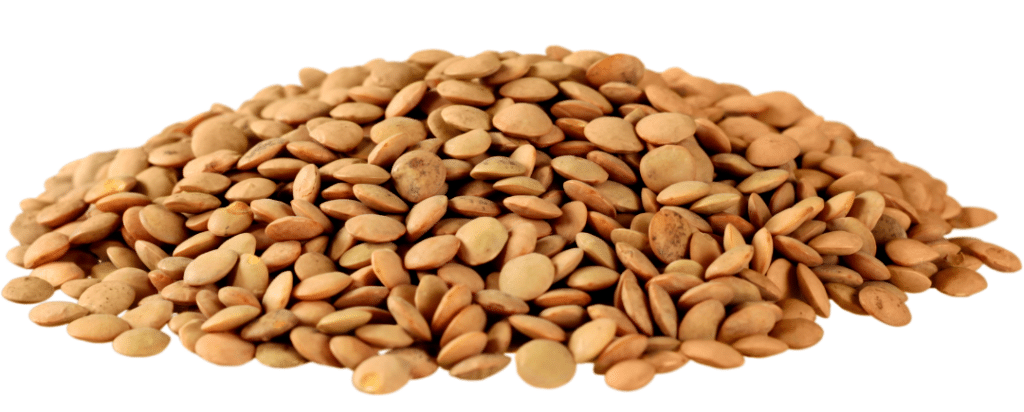
1/2 cup of cooked lentils has 3.5mg of iron. Add lentils to salads, soup, stew, snack on roasted lentils, or swap half the ground meat for lentils in recipes for a more budget-friendly iron-rich meal.
3. Spinach
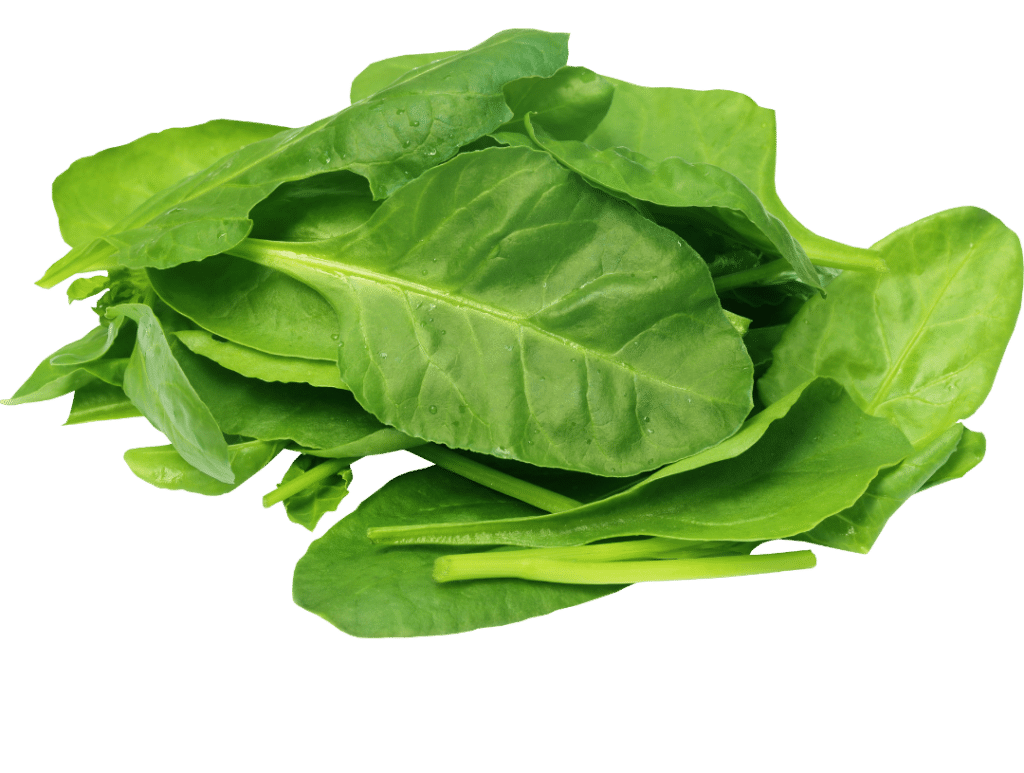
1/2 cup cooked spinach, or 4 cups raw spinach, provides 3.5mg iron. Cooked spinach shrinks in volume, making it a more concentrated iron source than fresh. Add spinach to soup, pasta, sauté in garlic as a side dish, or use in salads.
4. Beef
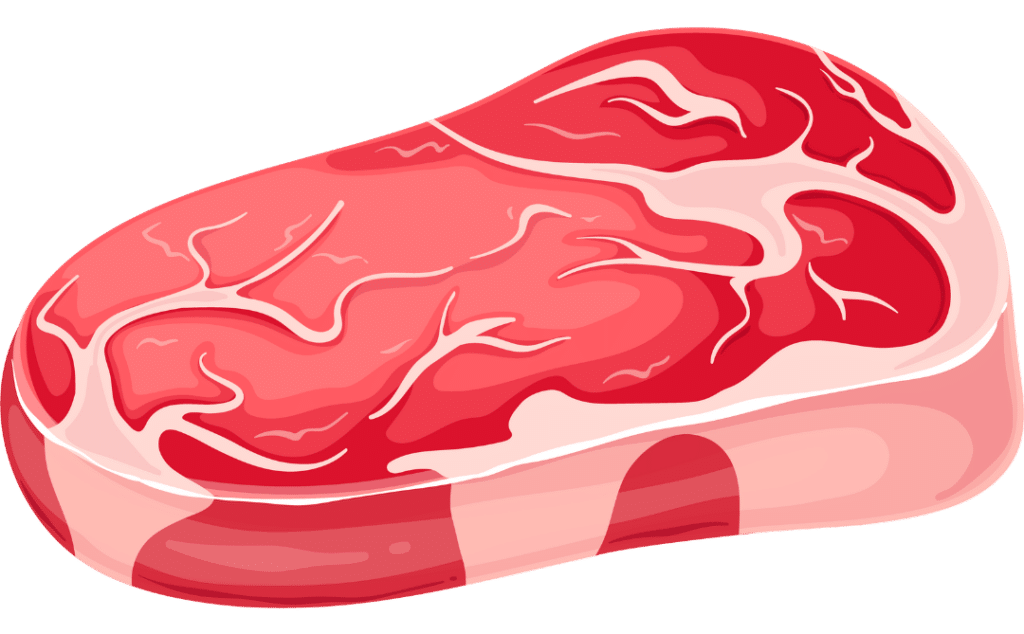
If you include meat in your diet, choosing beef occasionally as your protein source can help increase your iron intake. A 90g (or 3oz) serving of beef provides 3mg of iron.
5. Chickpeas
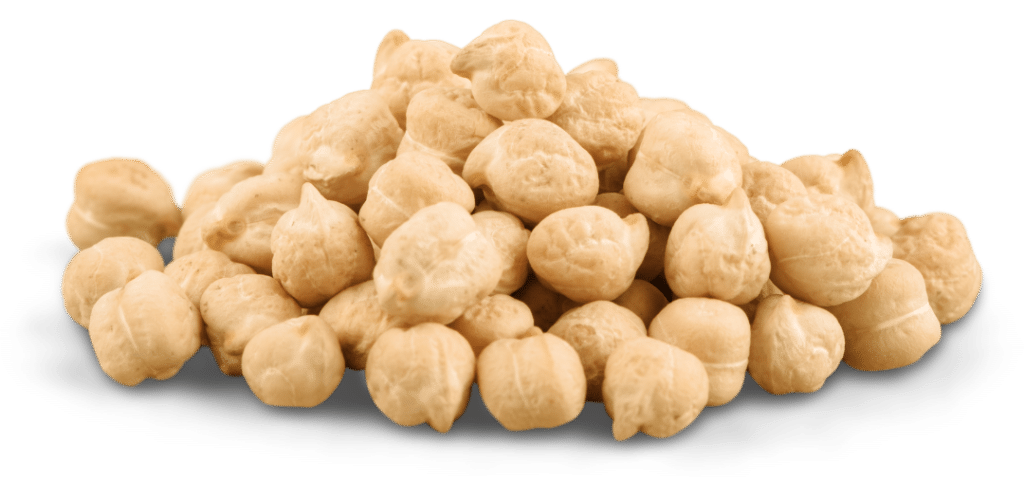
A 1/2 cup serving of chickpeas (cooked) provides you with 2.5mg of iron. Add chickpeas to salads, soup, pasta, or sauté with spices as a side dish. You can also mash chickpeas for a sandwich filling or enjoy roasted chickpeas an iron-rich snack between meals.
Best Food Sources of Iron (Continued)
6. Amaranth
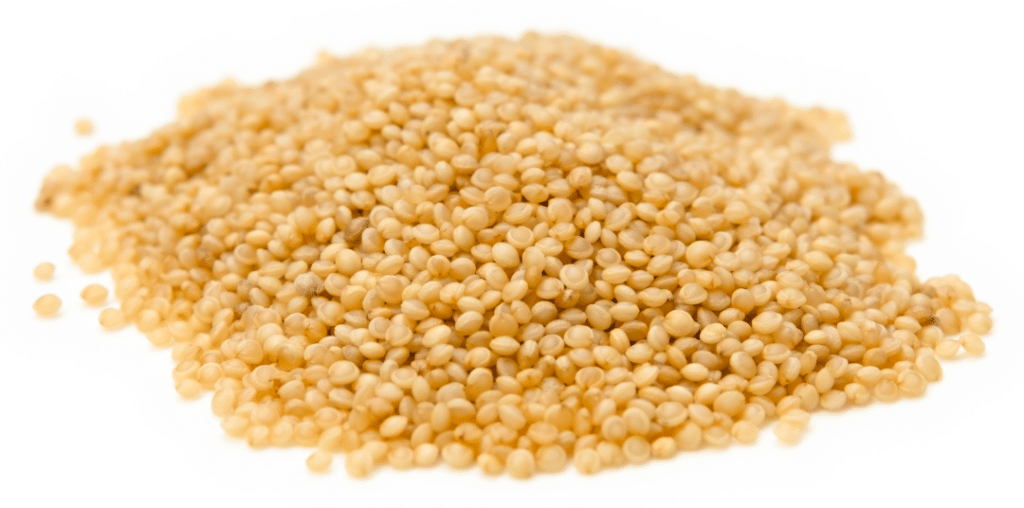
Amaranth is a whole grain that contains 3.5mg of iron per 1/2 cup cooked. Enjoy amaranth as a high-iron side dish, or add it to salads or soups in place of other starches.
7. Edamame
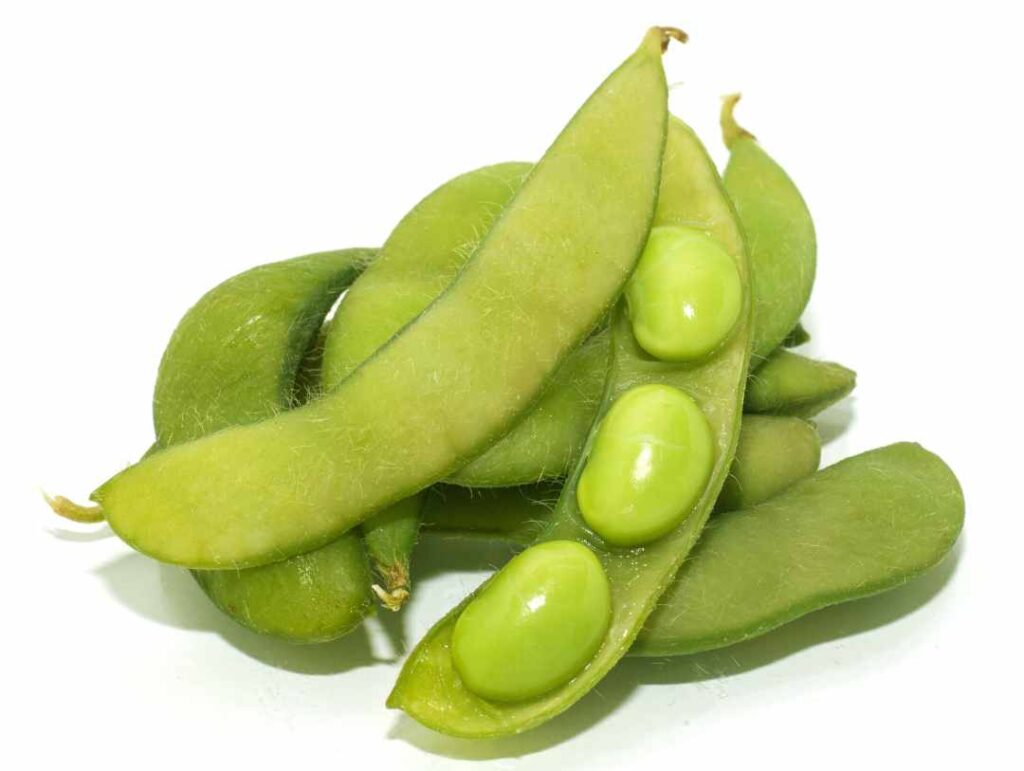
1/2 cup serving of edamame beans contains over 2 mg of iron. Add edamame to stir fry, salads, or enjoy as a protein and iron-rich snack between meals.
8. Kidney Beans
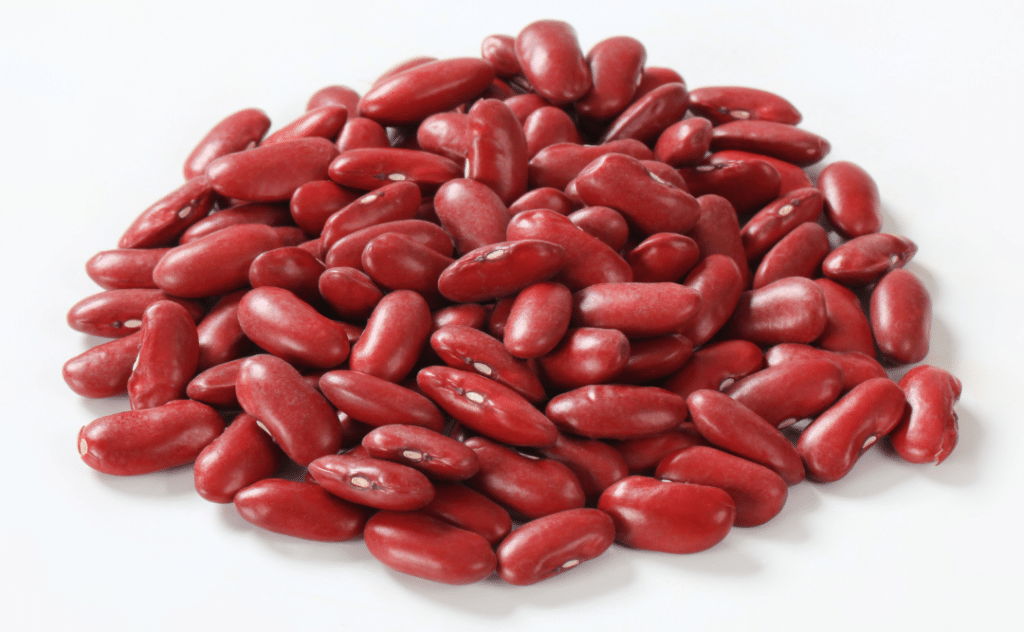
A 1/2 cup serving of kidney beans provides over 2mg of iron. Add to salads, soup, stews, or rice to boost the iron content of any meal.
9. Lima Beans
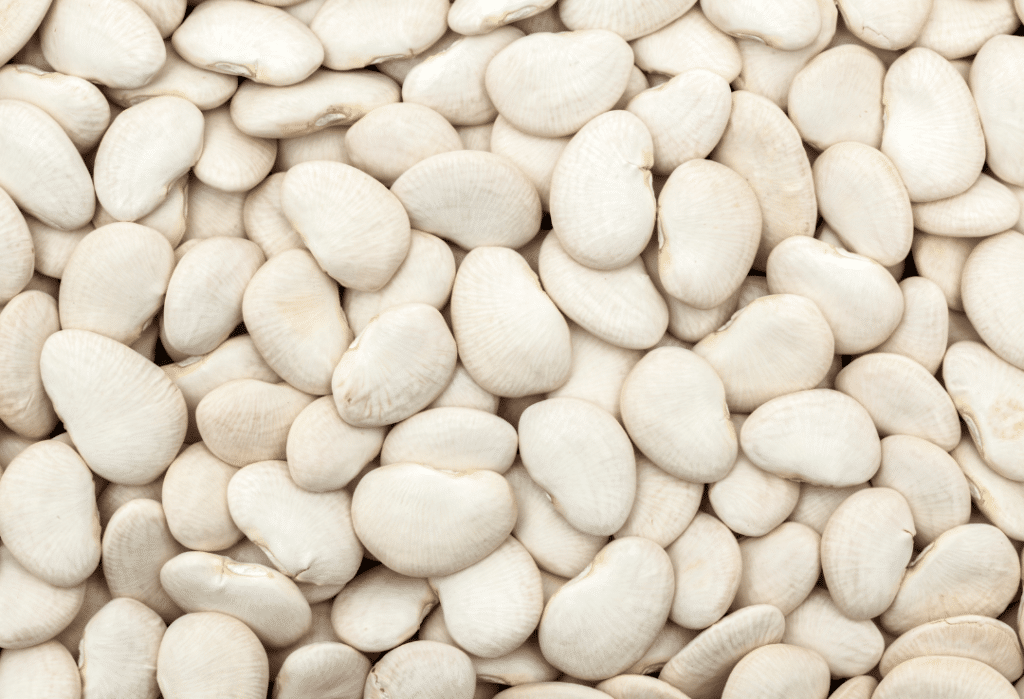
Lima beans contain over 2mg of iron per 1/2 cup serving. Season with lemon, garlic, and other herbs for a tasty protein and iron-rich side dish, or add to soups and stews.
10. Cashews
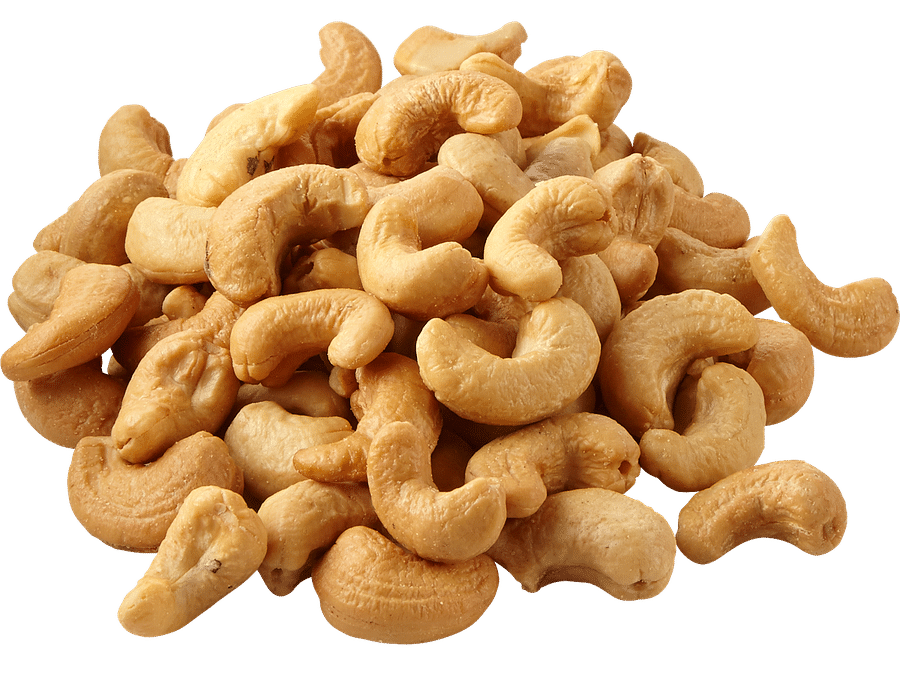
Cashews contain over 2mg of iron per 1/4 cup serving. Enjoy as a snack between meals with fruit, or add to yogurt, oats, or salads for a tasty crunch.
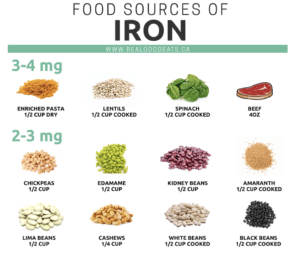
Looking for more sources of iron? Download our FREE resource – Best 25 Food Sources of Iron here! (preview above)
Sources:
- Health Canada, Iron (May 2022)
- U.S. Department of Health and Human Services, Office of dietary supplements, Iron (June, 2023).
- De Benoist, B., Cogswell, M., Egli, I., & McLean, E. (2008). Worldwide prevalence of anaemia 1993-2005; WHO Global Database of anaemia.
- Nutrient data obtained from Canadian Nutrient File (August 2023).
- Health Canada, Dietary reference intakes Tables. Retrieved April 5, 2023.

